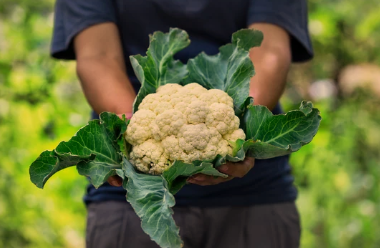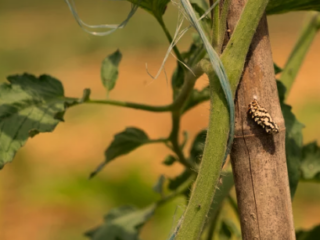Cauliflower is a versatile and nutritious vegetable that often finds its way into various dishes, from roasted cauliflower steaks to creamy cauliflower soups.
However, one common issue that can detract from its visual appeal and overall quality is the development of brown spots.
These unsightly spots not only affect the appearance of cauliflower but can also impact its taste.
In this comprehensive guide, we will delve into the causes of brown spots on cauliflower and provide you with essential tips and preventive measures to keep your florets fresh and flawless.
The Causes of Brown Spots on Cauliflower

Brown Spots on Cauliflower
Cauliflower naturally undergoes aging and oxidation, leading to the development of brown spots.
This process is primarily driven by enzymes and polyphenols present in the vegetable.
Enzymatic browning occurs when enzymes react with oxygen in the air, resulting in the formation of brown pigments.
Additionally, physical damage during handling and transportation can cause bruising, which can further contribute to browning.
Furthermore, bacterial and fungal infections, such as Xanthomonas campestris and Alternaria brassicicola, can also result in discoloration and spoilage of cauliflower.
Essential Tips to Prevent Brown Spots on Cauliflower:

To maintain the freshness and visual appeal of cauliflower florets, consider implementing the following preventive measures:
Selection and storage:
When selecting cauliflower, opt for heads with tight, compact florets and vibrant green leaves. These indicate freshness. Avoid cauliflower with discolored or mushy spots.
Proper storage is crucial as well. Refrigerate cauliflower in a plastic bag or a perforated plastic container to retain its moisture and prevent wilting and browning.
Avoid storing cauliflower near ethylene-producing fruits like apples and bananas, as they can accelerate the ripening process and lead to browning.
Gentle handling
Cauliflower is susceptible to bruising, which can accelerate the development of brown spots. Handle the vegetable with care, avoiding rough handling or dropping it.
If possible, leave the leaves intact as they provide a natural protective layer. During transportation, use padded bags or containers to protect the florets from damage.
Proper preparation
Thoroughly wash cauliflower florets before cooking to remove any dirt or bacteria that may contribute to discoloration.
Inspect the florets and trim off any brown spots or damaged areas before using them in your recipes. If you notice minor browning on the florets, it’s generally safe to consume after trimming off the affected parts.
Quick consumption
Cauliflower is best consumed within a reasonable time frame.
The longer it sits, the higher the chances of browning due to aging and oxidation. Incorporate cauliflower into your meals promptly to enjoy it at its freshest.
If you have leftover cauliflower, store it in an airtight container in the refrigerator and consume it within a day or two.
Additional Preventive Measures

Also, to the essential tips mentioned above, consider implementing the following preventive measures to further minimize the occurrence of brown spots on cauliflower:
Blanching
Blanching cauliflower before freezing or using it in recipes can help preserve its color and texture.
The blanching process involves briefly immersing the florets in boiling water for about 2 minutes, followed by an immediate transfer to an ice bath to halt the cooking process.
This method helps maintain the vibrant white color of the cauliflower and can be especially useful if you plan to freeze cauliflower for later use.
Acidic solutions
Treat cauliflower with acidic solutions such as lemon juice or vinegar to help prevent browning. The acid acts as an antioxidant, counteracting the enzymes responsible for oxidation.
Create a simple acidic solution by mixing water with lemon juice or vinegar and dip or soak the cauliflower florets in it for a few minutes before use.
Alternatively, you can sprinkle lemon juice or vinegar directly on the cauliflower florets.
Proper storage
Proper storage is essential for preventing brown spots on cauliflower.
Keep cauliflower in the refrigerator, ideally in the crisper drawer, to maintain its freshness.
Ensure the vegetable is dry before refrigerating, as moisture can promote spoilage. If you’re storing cauliflower for an extended period, blanching and freezing the florets can help maintain their quality.
Conclusion
By implementing the tips and preventive measures outlined in this guide, you can effectively prevent brown spots on cauliflower, keeping your florets fresh, visually appealing, and enjoyable.
Remember to select high-quality cauliflower, handle it gently, store it properly, and use it promptly.
Also, measures such as blanching and treating with acidic solutions can also contribute to preserving the cauliflower’s color and texture.
Following these practices, you not only enhance the quality of your cauliflower dishes but also minimize food waste. Embrace these preventive measures and enjoy flawless cauliflower florets in your favorite recipes.




